5 Ways to Explore Istria Off the Beaten Path
March 12th, 2022 - There’s so much more to Istria beyond the famous Rovinj landscape or the olive oil and truffle fame. The region is full of treasures to discover, and we're happy to help you plan your visit with five unique ideas for things to do in Istria
And then go ahead and have those truffles anyway - we’d never think to suggest otherwise.
Walk the Parenzana trail
Not necessarily the whole thing, of course: running through three countries, the Parenzana trail is 123 kilometres long in total, and it's perfectly fine to only walk or cycle a part of it. Historically, Parenzana was known as the narrow-gauge railway which connected the Italian port city of Trieste with Poreč in Istria, passing through many inland villages and smaller towns along the way.
Fun fact: as the inauguration of the Parenzana line in Trieste was delayed several times due to various issues, the locals got skeptical after a while. When the first train ceremonially arrived in Trieste on April 1st, 1902, almost no one showed up at the railway station because people were convinced the announcement was an April Fools’ joke.
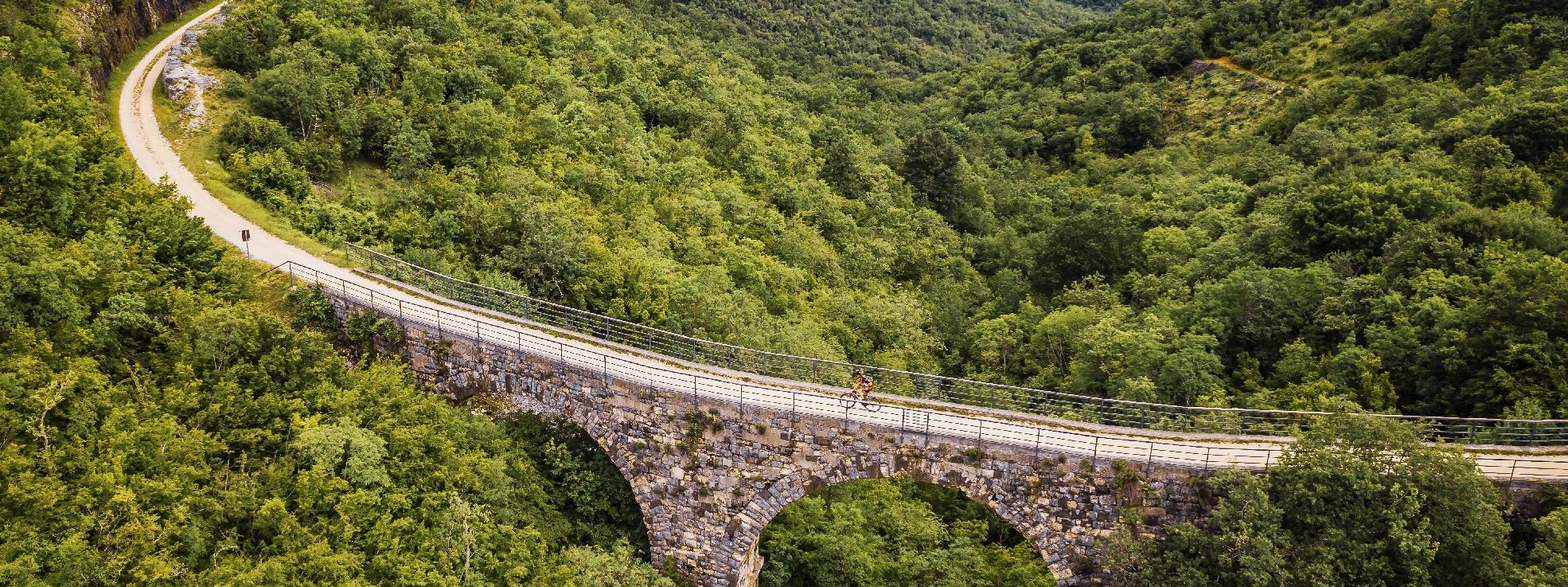 Parenzana trail / parenzana.net
Parenzana trail / parenzana.net
But it wasn’t, and the railway soon made it possible for agricultural produce to be distributed all over the region, stimulating Istria’s economic progress and becoming somewhat of a lifeline for the local population. Although the railway line ceased operation in 1935, it certainly left a mark on the region, and so it was decided to revive the route as a hiking and cycling trail.
Parenzana will take you over bridges and viaducts, now secured by guard rails; it runs through well-lit tunnels and snakes through the lush landscape. The entire trail is well-marked and is split into shorter routes - a comprehensive guide is available on parenzana.net, in several languages.
Ride the zipline over the Pazin abyss
Although Pula is the biggest town in Istria, the county’s administrative seat is actually Pazin, a town located in the very centre of the region.
Pazin boasts a medieval castle that was once a residence of Istrian margraves and hasn’t lost any of its grandeur with time. Perched on top of a tall cliff plummeting into the Pazin abyss, the castle dominates the majestic landscape which inspired literary giants of the likes of Dante Alighieri and Jules Verne.
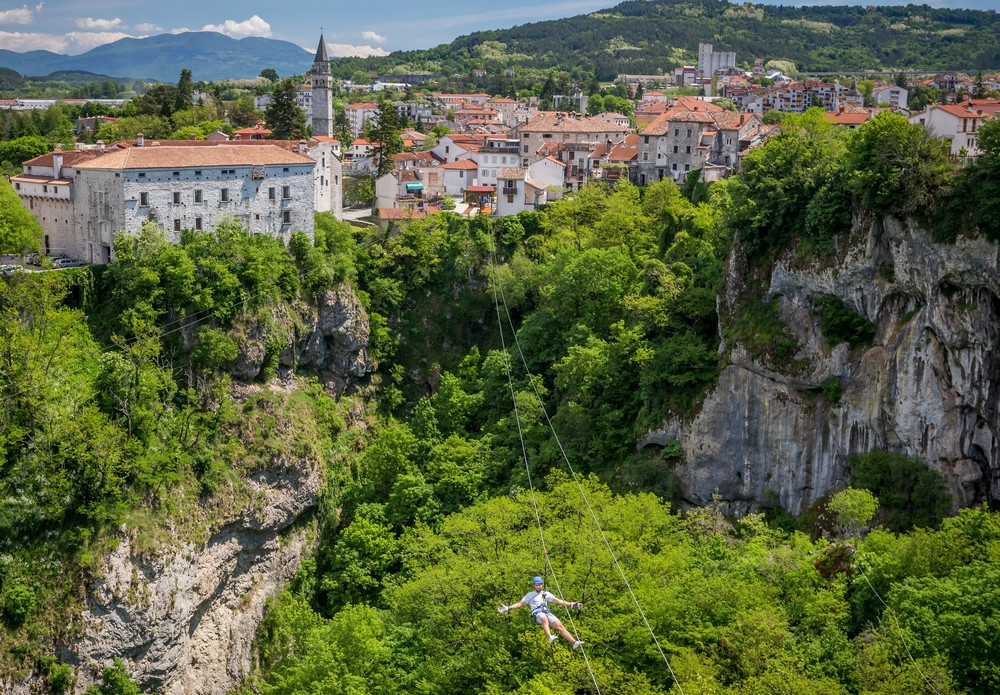 Pazin / Central Istria Tourist Board, photo by Julien Duval
Pazin / Central Istria Tourist Board, photo by Julien Duval
And what better way to take in the impressive sights than flying over the natural attraction? The Pazin zipline runs over the abyss in two stages: the first cable is 220m long and the second 280m, giving adrenaline lovers plenty of time to admire the historic landscape, as well as the karst phenomenon down below.
The zipline operates regularly from May 1st, but can be visited in the off-season as well upon request, provided you’re visiting with a group - contact info is available on their Facebook page.
Hike the contraband trails of Učka mountain
Have you ever had a chance to retrace the steps of smugglers of the past? A few years ago, three unique hiking trails were established on the Učka mountain, the natural border between Kvarner and Istria, introducing hikers to the history of contraband activity in the area.
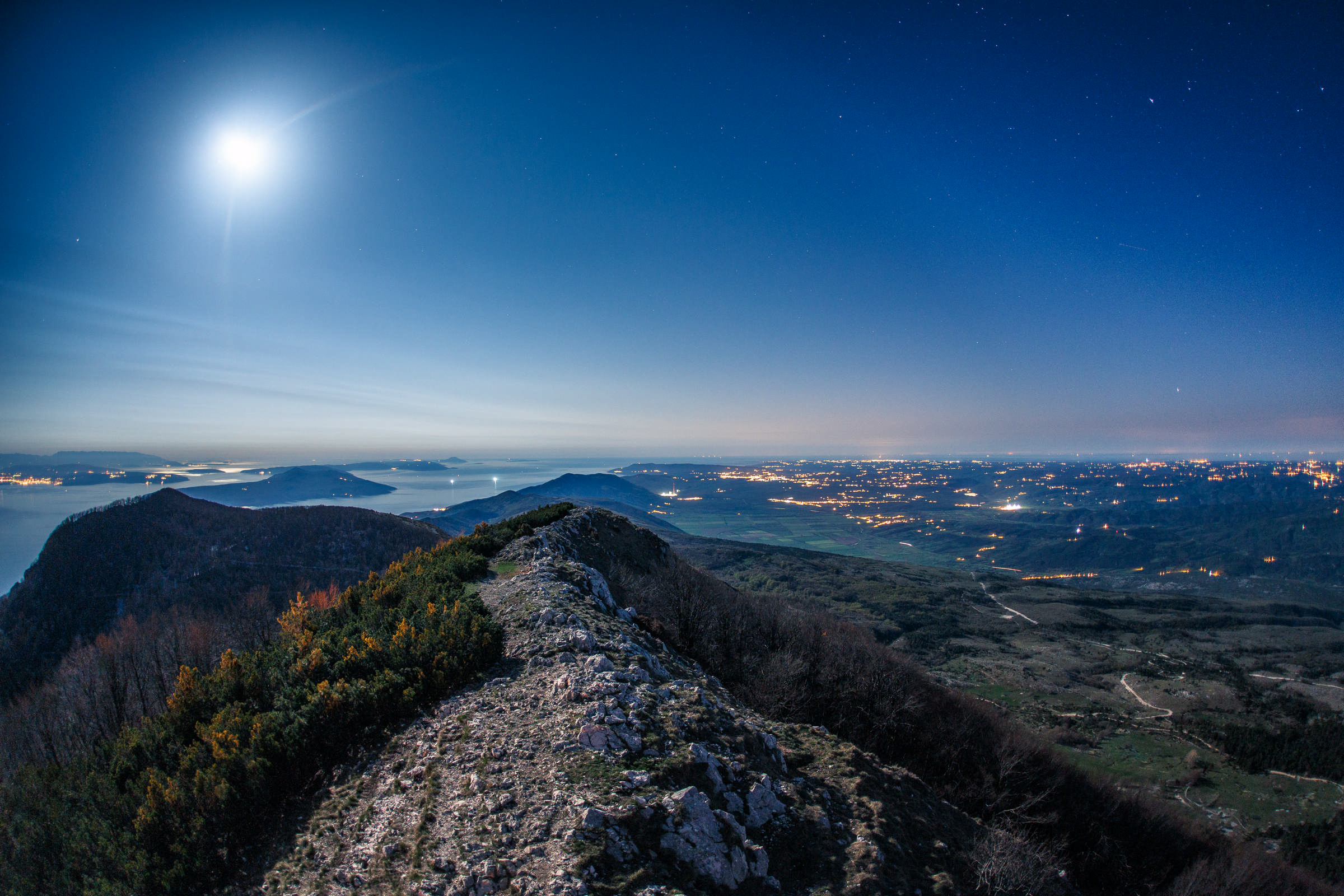 Učka mountain © Mario Romulić
Učka mountain © Mario Romulić
In the 1930s, a duty-free zone was established on the coastline around Rijeka to stimulate tourism and the local economy. Overnight, consumer goods became much cheaper, and the struggling population soon started to smuggle products such as sugar and petroleum out of the duty-free zone and over the Učka mountain on foot. They sold the goods for profit in the rest of the region as a way to survive in times of scarcity - check out this TCN feature for the full story.
You can find detailed information about the hiking routes in a dedicated mobile app, along with a list of accommodation providers and restaurants in the area. It’s available to download on GooglePlay and AppStore - search for 'Kontraband thematic trails'.
Discover the history of mining in Raša
Istria has a long history of coal mining, specifically in the area around Labin town located off the eastern coast of the peninsula. Arguably the most unique place in the mining landscape is Raša, known as Istria's youngest town which was purposefully built in the 1930s to house miners and their families.
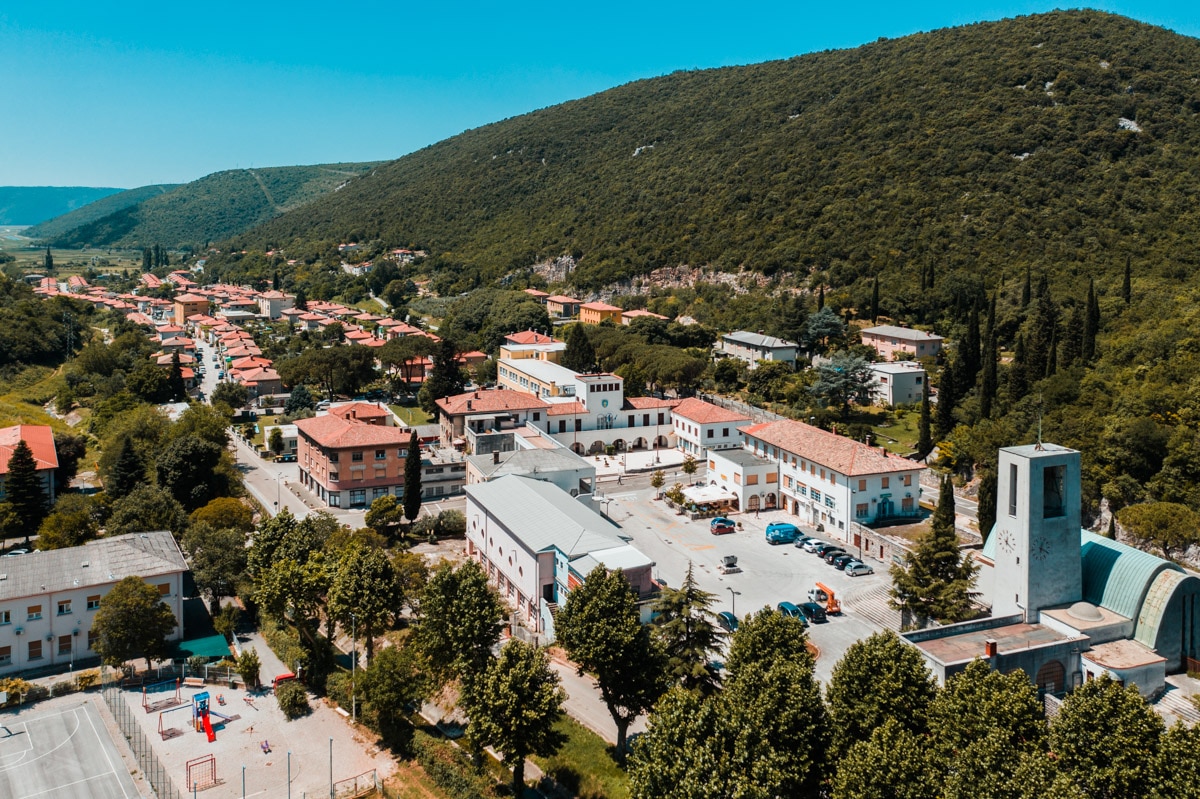 Raša town / Raša Tourist Board
Raša town / Raša Tourist Board
Two pairs of streets lined with former miners’ houses meet at the central square in Raša, crowned with a church built in the shape of an overturned mining cart and dedicated to the patron saint of miners, St Barbara.
Even though the mines closed a long time ago, you can experience what it was like to spend your days in the dark underworld. Located on the main square in Raša, the Miners House Arsia tells the story of Istrian miners and provides insight into their lives both above and below ground.
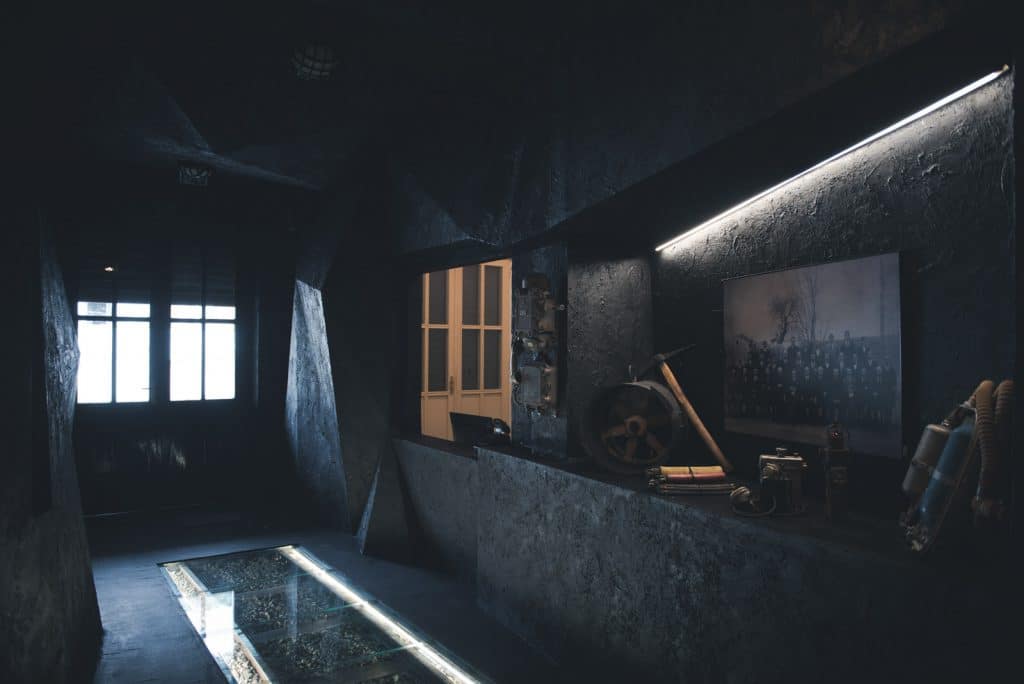 Miners' House Arsia / Raša Tourist Board
Miners' House Arsia / Raša Tourist Board
Starting from the entrance built like a mining shaft, the museum evokes the atmosphere of a mine - you can walk on the original railroad tracks surrounded by the sounds of coal digging and distant explosions, watch archival films to learn the stories of real miners who once inhabited the town, but also step into their homes thanks to a perfect recreation of a typical miner’s apartment.
Learn more about the Miners’ House over at the Raša Tourist Board.
Visit Croatia’s oldest lighthouse in Savudrija
The Adriatic coast is dotted with numerous historic lighthouses, most of them built in the 19th century. The one in Savudrija, the northwestern tip of Istria, boasts two champion titles: it’s the oldest active lighthouse in Croatia, and the world’s first lighthouse powered by coal gas.
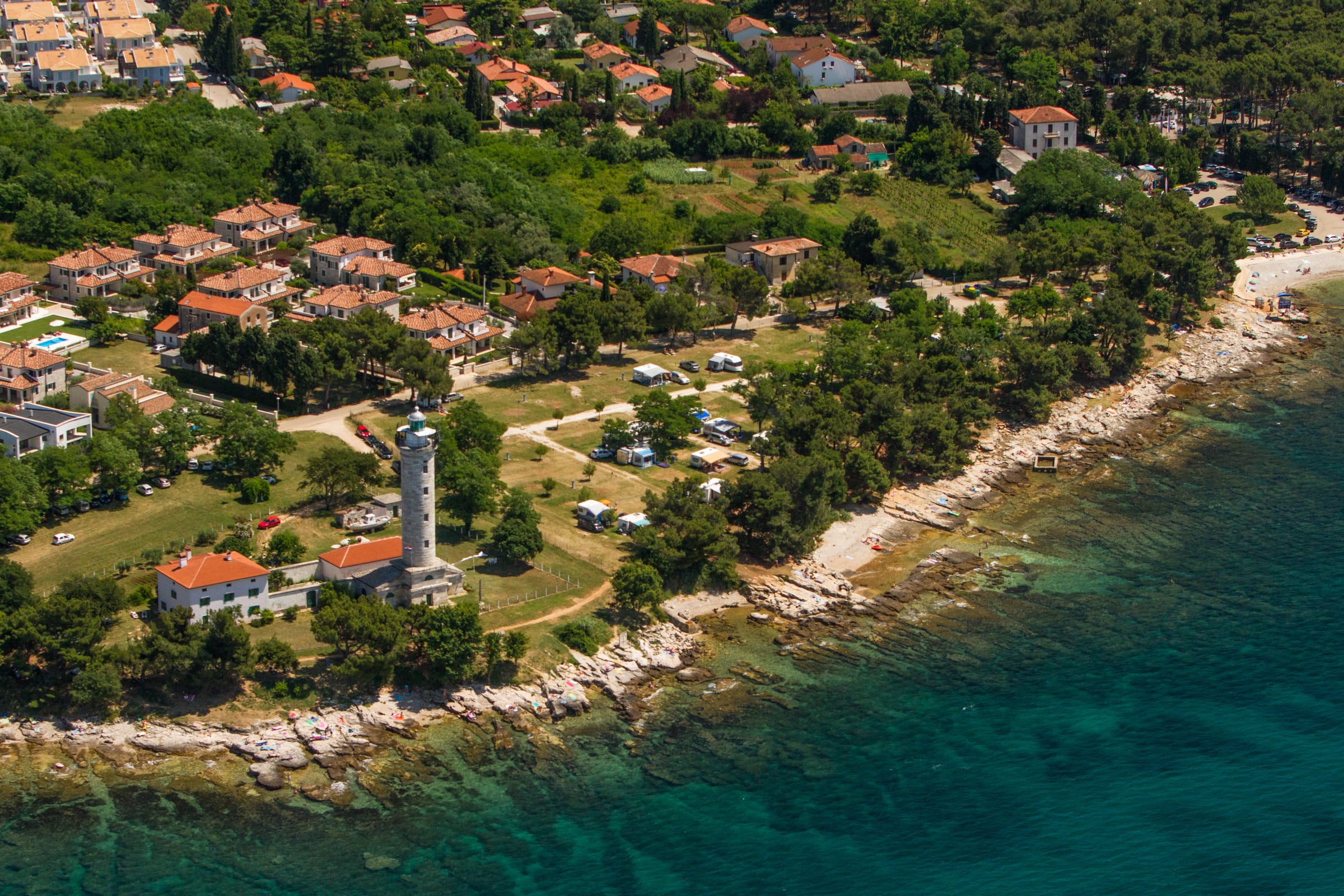 Savudrija lighthouse © Mario Romulić
Savudrija lighthouse © Mario Romulić
The lighthouse was built of white Istrian stone and powered by coal shipped in from the Labin mines. It was inaugurated in 1818 and became a local sensation overnight: people were so fascinated by the new structure, the lighthouse keepers were soon granted a licence to bear arms and were instructed to shoot any enthusiasts who attempted to scale the building and climb to the top.
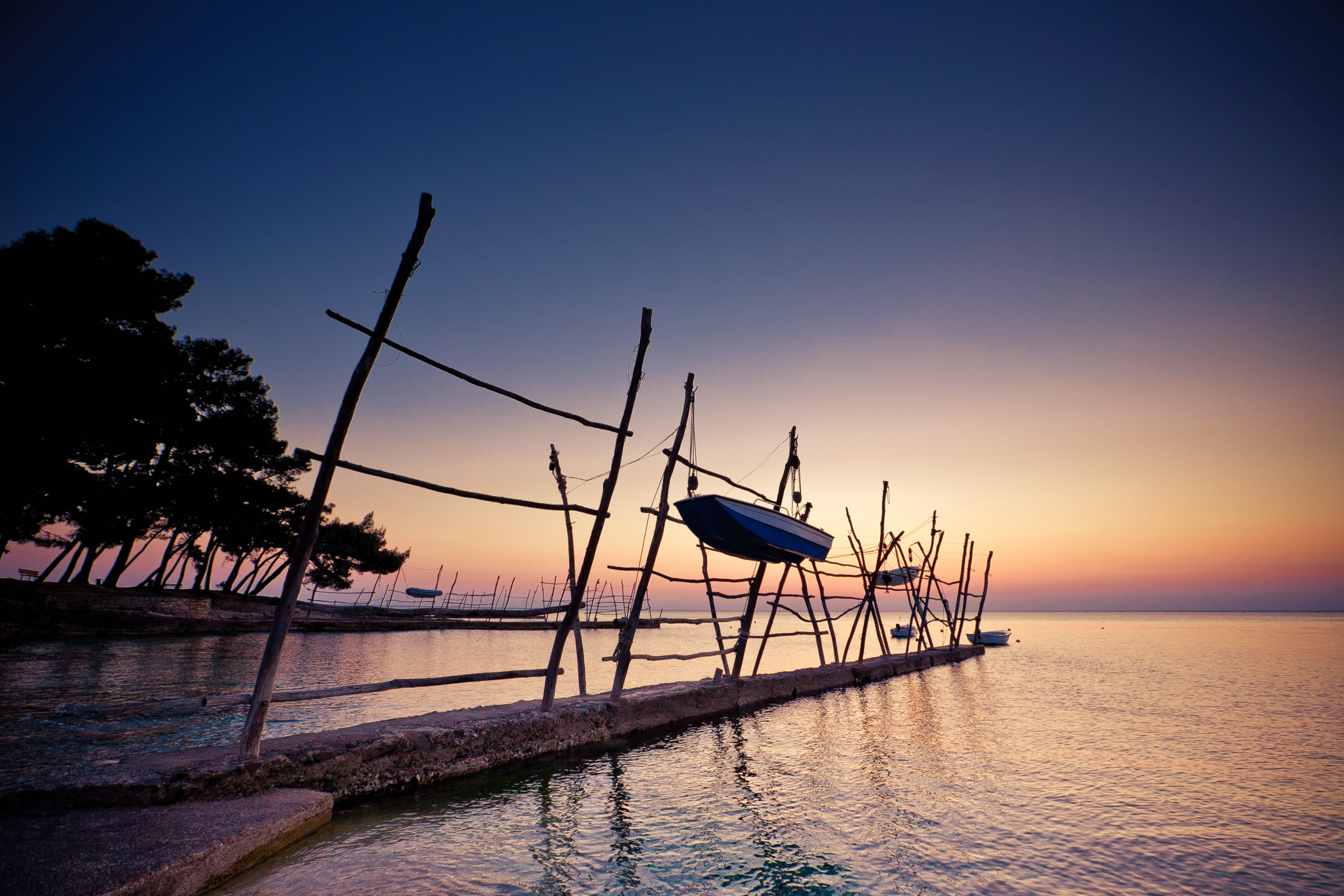 Savudrija © Mario Romulić
Savudrija © Mario Romulić
Nowadays fully automated and monitored by a single keeper, the lighthouse isn’t that much of a novelty anymore, but is still a beautiful landmark and in itself a good enough reason to visit Savudrija. Let it also be known that the place boasts a pretty spectacular coastline, lined with pines and traditional fishermen's boats. The waters around Cape Savudrija are favoured by surfers and divers alike.
Smuggling for Survival: Contraband Trails of Učka Mountain
February 19th, 2022 - In the 1930s, villages in northeastern Istria made a living running contraband over Učka mountain from a duty-free zone on the coast. The fascinating story of smuggling for survival is just part of the local history presented in the Ecomuseum Vlaški puti in Šušnjevica
At the foothill of Učka mountain in Istria lies the village of Šušnjevica. It’s not a destination to make headlines or get a mention on a must-see list. And yet, you’d be hard-pressed to find a better place to visit if you happen to like going off the beaten path.
Šušnjevica packs so much to discover, including a history of smuggling, stories of survival, and a dying language. The many facets of this incredible little place are presented in an interpretation centre named Vlaški puti (Vlach paths), introducing visitors to the social history and cultural heritage of the area.
Clandestine activities always seem to draw the most attention, so it only makes sense to start there: the unassuming village is located in the area where illicit trade thrived in the early 20th century.
For a bit of historical context, the Italian-ruled Kvarner Province at the time encompassed the wider Rijeka area, including a chunk of Slovenian territory in the north, and all the settlements lining the Opatija riviera in the south.
In 1930, the coastal part of the province was declared a duty-free zone by the Italian government (zona franca). The economic crisis left a mark on these parts as well, development of tourism was stalled, and so the decision to abolish customs was meant to shake things up a bit and give Rijeka and Opatija an edge over other popular destinations in the Northern Adriatic.
Naturally, consumer goods suddenly became much cheaper in the duty-free zone than in the rest of the province, and the local population was nothing if not resourceful. Living conditions were tough at the time, especially in rural areas, and any opportunity to make a living was seen as more than welcome.
And so the people of Šušnjevica and other villages in the area started running contraband, smuggling inexpensive goods out of the duty-free zone. They sold their produce and poultry in seaside towns, and in turn mostly purchased sugar, coffee, textile and petroleum. The illicit goods were transported on foot over Učka mountain and resold for profit in the rest of the region.
It was a dangerous business, both in terms of scaling rugged mountain slopes and avoiding the unforgiving customs officers who monitored the area. It should be mentioned that contraband goods were not smuggled out of greed for profit, but solely to ensure survival in times of scarcity.
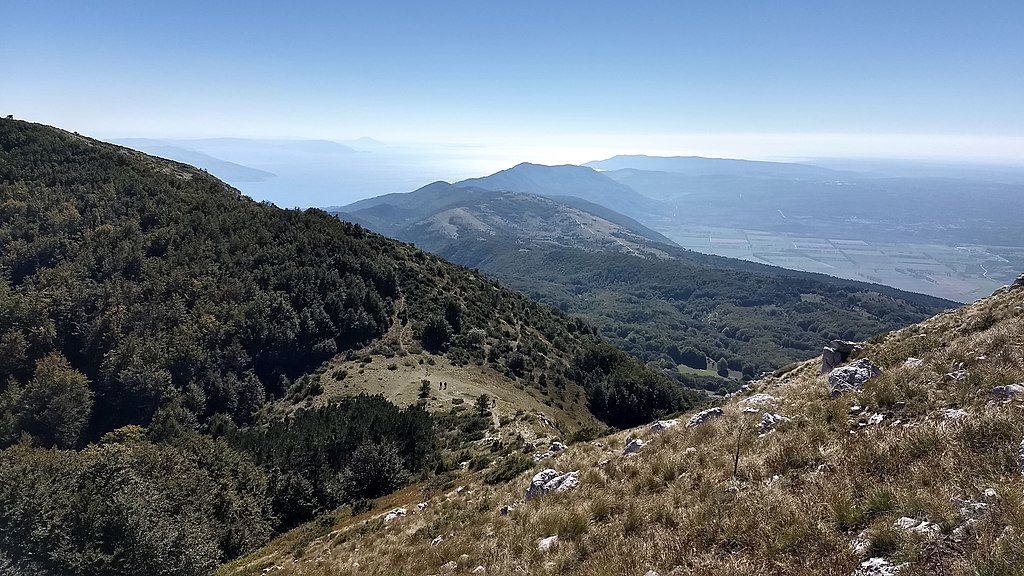 Učka mountain
Učka mountain
If you’re up for a hiking adventure, you can now retrace the steps of smugglers past. Three hiking trails have been established in the territory of Učka Nature Park to introduce visitors to the lively history of contraband in the area. A mobile app was launched, containing detailed information about the hiking routes, along with a list of accommodation providers and restaurants in the area. It’s available to download on GooglePlay and AppStore - look for Kontraband thematic trails.
All three are demanding routes and vary from 6 to 10 kilometres in length, but are well worth the effort - the trails are scenic, feature wonderful views, and you’ll get to see a few historic sites along the way. Among them is the abandoned village Petrebišća, a place of importance in regards to Slavic mythology. Another stop commemorates a young smuggler who tragically died aged 12 when he got struck by lightning on Učka mountain; following his death, every smuggler in passing would lay a stone at the memorial site, which in time grew into a massive pile of stone, the so-called gromača.
The shortest trail (KB1) starts in Šušnjevica, and those who opt to take this route should really use the opportunity to discover more about this fascinating place at the Ecomuseum Vlaški Puti.
Director of the interpretation centre Viviana Brkarić is more than familiar with the subject, having had family members who dealt in the contraband trade. Viviana speaks of her grandmother, born in 1901; times were tough, she had to support her family, and was known to make the trip to the duty-free zone and back 3-4 times a week. She’d occasionally get caught smuggling goods over Učka which landed her in prison, but she didn’t mind as it meant ‘she’d get to rest for a while’.
The prison guards soon realised she knew how to sew, and would have her sew clothes and mend bedding. According to Viviana, grandma didn’t mind as they treated her as a guest and gave her better food than to an average prisoner. Apparently, the guards were quite happy to see it was her every time she was apprehended, and were known to say ‘she’s here, she’ll now mend everything that needs mending’. (Agroklub/Blanka Kufner)
These days, Šušnjevica is home to about 70 people, most of whom are Istro-Romanian in origin and are some of the last living speakers of Vlashki (vlaški), one of the two existing varieties of the Istro-Romanian language. The other variety is called Zheyanski (žejanski) and is spoken in the Žejane area on the northern side of Učka mountain.
Once spoken in a much larger part of northeastern Istria, Istro-Romanian is now listed as ‘severely endangered’ in the UNESCO Red Book of Endangered Languages, and is inscribed in the list of protected intangible cultural heritage of Croatia. In the mid-20th century, the language was reportedly spoken by up to 1500 people, but the numbers dwindled as the harsh living conditions drove people to move to bigger urban areas in the country or emigrate to the US and Australia.
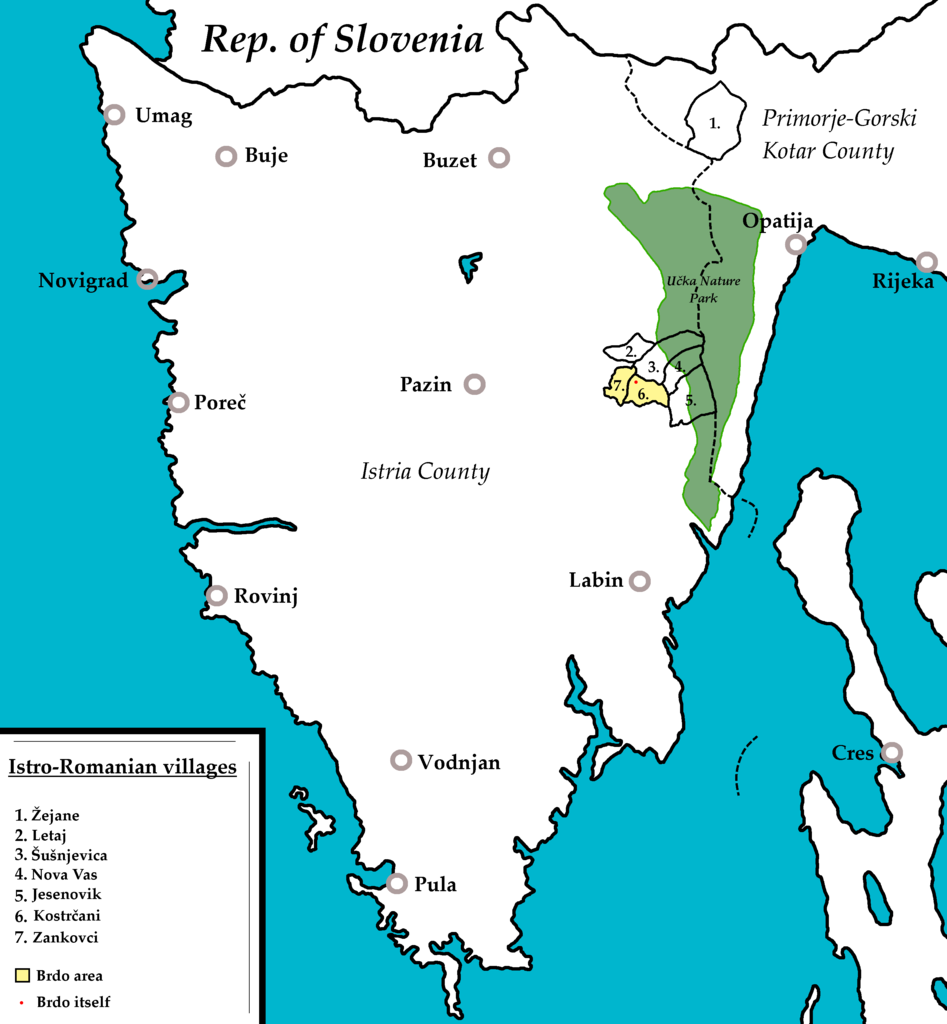
Interestingly, nowadays there are more native speakers of Istro-Romanian living in New York than in Croatia. It’s estimated there’s a community of some 300 people keeping the language alive in the diaspora, whereas the latest count from 2019 put the number of Vlashki speakers in Croatia at about 70.
The language is not passed from generation to generation anymore, and so the youngest people who actively speak Vlashki are about 50 years old.
Preserving this priceless heritage for future generations is one of the goals of the ecomuseum. The interpretation centre is designed to introduce visitors to the local history and traditions, while the media library contains materials in Vlashki and Zheyanski languages, as well as digitised publications about the language and other topics of regional importance.
Website: Ecomuseum Vlaški puti
Working hours: Monday to Saturday, 10 AM - 2 PM
Učka Nature Park Officially Opens Tourist Center
May 26, 2021 - As part of the EU co-financed project "Učka 360°", the Visitor Center, the new main destination for all future visitors to the Učka Nature Park officially opens. It is a capital project worth almost 26 million kunas, whose primary purpose is to raise visitors' awareness of the importance of nature and the need for its active protection.
HRTurizam reports, the center was built with the reconstruction and rehabilitation of an old, devastated, and abandoned farm building in the center of the Park and is located at 930 meters above sea level, making it unique on a local and global scale.
The primary purpose of the Poklon Center for Visitors is educational and interpretive, through raising visitors' awareness of the importance of nature and the need for its active protection, so the facility itself is designed to serve as a multipurpose. Thus, on about 1,200 m2 of space, interpretive, educational, tourist and office facilities found their place, namely: souvenir shop, reception hall, conference hall, space for occasional exhibitions, office space for the work of the Public Institution, cafe-bar, and economic facilities and garages. There is also a large classroom divided into four units that symbolize the four seasons, which is intended to conduct educational programs with the youngest visitors.
The centerpiece is certainly the permanent museum exhibition on the ground floor, which, in a modern and interactive way, teaches visitors about the natural and cultural values of the Nature Park and the surrounding area and the need for its protection and preservation.
"During the design and construction of the center, the most modern technological solutions in terms of energy efficiency were applied. In addition to renovating the existing dilapidated building, we were guided by sustainable development and business guidelines through natural materials such as stone, glass, and wood. Museum content is even more complex and innovative. In the museum, we currently have a unique exhibition, Mountain, a kinetic table of the Učka model composed of about 30,000 pins that simultaneously make projections of different views, spatial and temporal changes on Učka, and our visitors can fly with bats, get to know the plant and animal species living in the Park or enjoy the 360 views from the top of Vojak", said Egon Vasilić, director of the Public Institution Nature Park Učka.
The Visitor Center opening in the Učka Nature Park, which covers Istria and Primorje-Gorski Kotar County, is also important for reducing seasonality, i.e., extending the tourist season in this important tourist area. Thus, in the future, the Center will be the starting point for further research of the nature of the Učka region, which many nature lovers will enjoy.
"With the opening of this facility, the Učka Nature Park moves to a completely new, year-round level of work and activities, especially in the field of interpretation, education, and organization of the system of visiting informed and educated visitors," concluded Vasilić.
The Center opens its doors to all nature lovers today (Wednesday, May 26, 2021), the working hours of the center will be every day from 9 am to 5 pm, and the ticket price is 50 kuna.
For more on travel in Croatia, follow TCN's dedicated page.
100 Year Old Idea to Become Reality? Učka Cable Car Would Connect Sea and Mountains
The beginning of the Učka 360-degree project is the construction of a cable car.
Investment of Almost 50 Million Kuna for Učka Nature Park
A considerable investment for Učka Nature Park as the ''doing up'' of five tourist centres is planned.
Učka Nature Park to Host Feeding Ground for Griffon Vultures
The surviving Croatian population of griffon vultures will soon be stopping by Učka mountain to feed and nest


